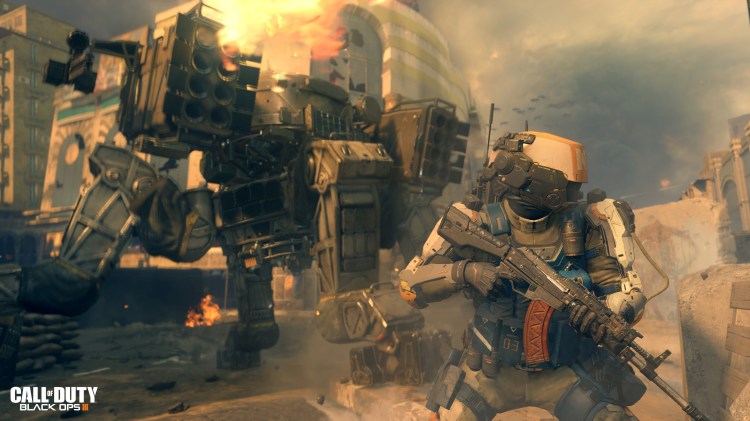GamesBeat: I liked the “guns up” and chaining moves sorts of ideas.
Lamia: It’s important for people to understand that it is a precision system. That’s why our thrust is an analog system. It’s something you control. When you use it you can feel it. But it’s not just about that. It’s not just about the wall run. It’s about how you chain all these things together that makes it a system that’s about movement, about athleticism.
That goes hand in hand with map design, which we like almost to virtual playgrounds in a way. We want you to be able to identify with things in the map and know that you can use one of those movement systems or chain movements to use them, or not. It’s up to the player. We didn’t want to disadvantage the player who doesn’t want to use some of those other movement systems. But I dare you not to, because they’re so much fun.
One of the philosophies on the team is that it has to be fun to fail. Even if you do it and you get taken out, you’re like, “That was fun! I think I can do it the next time.” And you will. You’ll get better at it. It’s a skill you’ll develop over time. You’ll get better from the first time you do it. But it’s super important, because it’s Call of Duty, that it does feel accessible. It’s important to make sure that at a fundamental level, people can play and enjoy the game if they know how to play Call of Duty. These are things they can work into it and enjoy.
GamesBeat: Black Ops II had the Strike Force levels. I notice you haven’t mentioned that yet.
Lamia: In Black Ops II we made a choice to have different types of campaign levels. That was a fundamental design decision. We designed levels for more traditional flow of campaign gameplay and then we created these distinct Strike Force levels. In this game that wasn’t one of our objectives. We wanted to create, instead, greater differentiation inside the core level gameplay.
We wanted to be able to deliver on the core tenets of Call of Duty — cinematic intensity, the great things about having a tightly scripted, meticulously architected, carefully crafted cinematic setting and narrative setting — but also, inside the level, in the same level, have open areas of gameplay for people to explore and play with.
One of the things you could do inside the Strike Force levels was to be able to take over the fun vehicles and drones on the battlefield. That was one of our driving motivations behind introducing that. But we wanted to be able to make all of the things that you can do level-agnostic. You can actually hack a drone and take it over, but it’s a level-agnostic ability, which is distinctly different. Once you have that ability, once you’ve earned it and chosen to outfit yourself with it, you can then enjoy that in that level you’re playing.
The thing about it is, you could go back to a level where you never played with that, and we’ve architected the game so you can play and have fun with that. It doesn’t have to be a distinct level or a choice for the player. We didn’t have to change the game for the player when they make that choice. We wanted to make sure we gave you all the tools to have fun and then make it your choice about how you wanted to approach each level. We want you to go back and replay those levels and have a different experience and get more enjoyment out of the campaign than you’ve ever had in a Call of Duty game.
VentureBeat's mission is to be a digital town square for technical decision-makers to gain knowledge about transformative enterprise technology and transact. Learn More



